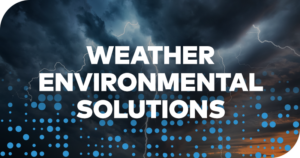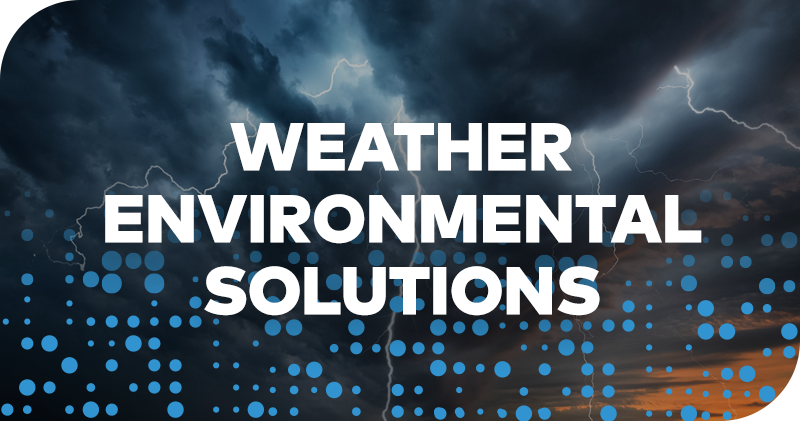Businesses Cite Top Reasons for API-Delivered Weather Data

Weather events are increasingly impacting businesses, municipalities and critical infrastructure. They have more than quadrupled in frequency with 2023 punctuating a historic number of billion-dollar disasters in the U.S., according to the National Oceanic and Atmospheric Administration.
Weather-based application programming interfaces (APIs) allow developers to integrate and access sophisticated weather data and forecasting models into their existing applications or systems.
While many businesses rely on weather forecasts to plan and prepare for potential weather impacts, recent advances in technology and data science techniques can help them become more weather informed and resilient. Weather-based application programming interfaces (APIs) allow developers to integrate and access sophisticated weather data and forecasting models into their existing applications or legacy systems. These integrated, real-time weather insights empower businesses to more closely analyze threats relevant to their assets, location, and risk thresholds.
We asked 250 decision-makers from different industries, including marine and offshore, renewable energy, mining and utility sectors, what they need from a weather API and the weather risks that concern them most. Here’s what we learned.
Top Weather Impacts
While hurricanes, wildfires and flash flooding make the news, surprisingly these are not the primary concerns for respondents. The top weather responses cited offer valuable insights into the most common risks and how an accurate, reliable weather API can empower more confident decisions.
More than 70% indicated that real-time and forecast weather information is critical for deriving insights into specific operations.
Wind speed and direction topped impacts of weather, cited by 36% of respondents. Particularly critical for aviation and offshore, strong winds pose significant safety risks, affecting flight paths and the stability of offshore platforms.
Strong winds pose significant safety risks, affecting flight paths and the stability of offshore platforms. Accurate wind data helps in making decisions to ensure safety and efficiency.
Temperature fluctuations—air, surface, and water—are another high-ranking weather impact with cascading effects across multiple sectors.
Consider the impact of extreme heat on energy forecasting and consumption, outdoor event planning and safety, public health and wellbeing, and even the integrity of infrastructure. Monitoring temperature trends allows businesses to adapt and optimize their operations accordingly.
Rain, snow, and other precipitation were cited by over 10% of respondents with the probability less significant than the type of precipitation.
Precipitation disrupts various sectors for different reasons. For aviation, precipitation can lead to flight delays or cancellations. In the energy sector, heavy rainfall can affect hydroelectric power generation, and offshore operational efficiency. In construction and outdoor crew scheduling, precipitation can stop or delay work.
Top Reasons to Use a Weather API
Respondents shared the top use-cases for leveraging weather APIs in their daily operations.
Real-time forecasting was the largest reason for using weather APIs. More than 70% indicated that real-time and forecast weather information are critical for deriving insights into specific operations.
“Hourly updates” was the most common requirement cited, with significant responses indicating the need for hourly forecasts and observations.
Threat management was identified as another top use. Identifying, mitigating, and managing potential threats posed by severe weather conditions, such as storms, hurricanes, or extreme temperatures, consume many businesses.
Fortunately, weather APIs are customizable by risk threat and location, and can trigger automated responses when integrated with a company’s existing systems.
Operational planning, including scheduling and resource allocation, was cited by nearly 40% of respondents spanning a wide swath of industries including construction, aviation, utilities, transportation, and logistics.
Weather APIs Offer Next Level Insights
Understanding and leveraging weather APIs can significantly enhance a business’ resilience and performance with information that’s easily integrated into existing systems.
The DTN Weather API delivers reliable, hourly-updated data on current weather conditions, forecasts up to 15 days, plus historical analysis data for any point on the planet.
But weather APIs are not equal. Critical differences between weather APIs include the granularity, timeliness, and data inputs delivered to the end-user. The DTN Weather API delivers reliable, hourly-updated data on current weather conditions, forecasts up to 15 days, plus historical analysis data for any point on the planet.
Our trusted, reliable, cloud-based service is backed by decades of meteorological expertise to boost decision-making, streamlining planning, resource, and risk management, and ensuring safety.
Visit DTN Weather API to discover more on ways our data helps users make more confident weather-impact-based decisions to stay ahead of weather-related challenges.











 Comprehensive weather insights help safeguard your operations and drive confident decisions to make everyday mining operations as safe and efficient as possible.
Comprehensive weather insights help safeguard your operations and drive confident decisions to make everyday mining operations as safe and efficient as possible. Learn how to optimize operations with credible weather and environmental intelligence. From aviation safety to environmental compliance, our comprehensive suite of solutions delivers real-time insights, advanced forecasting, and precise monitoring capabilities.
Learn how to optimize operations with credible weather and environmental intelligence. From aviation safety to environmental compliance, our comprehensive suite of solutions delivers real-time insights, advanced forecasting, and precise monitoring capabilities. 

